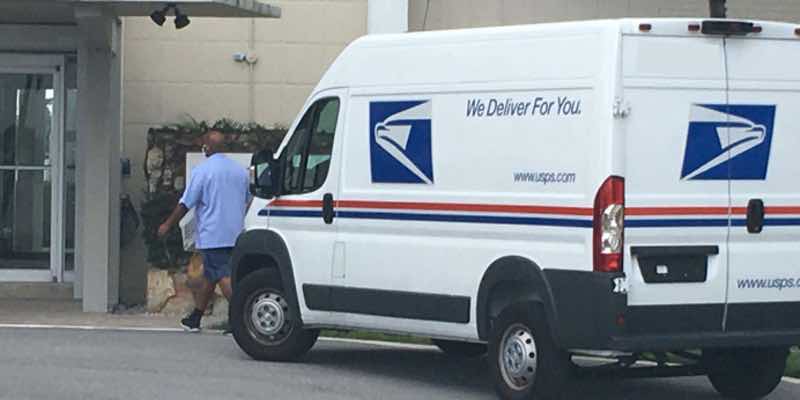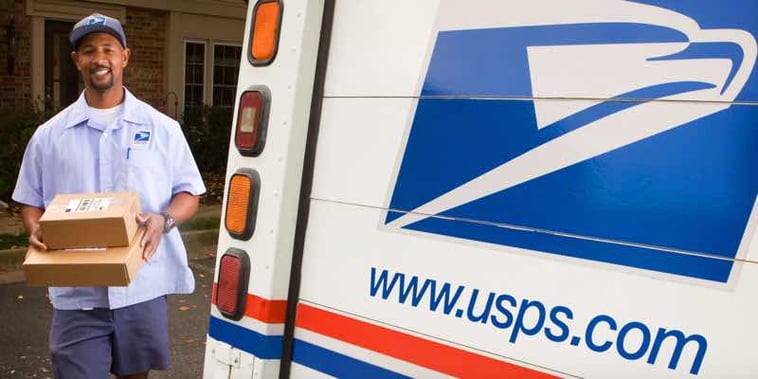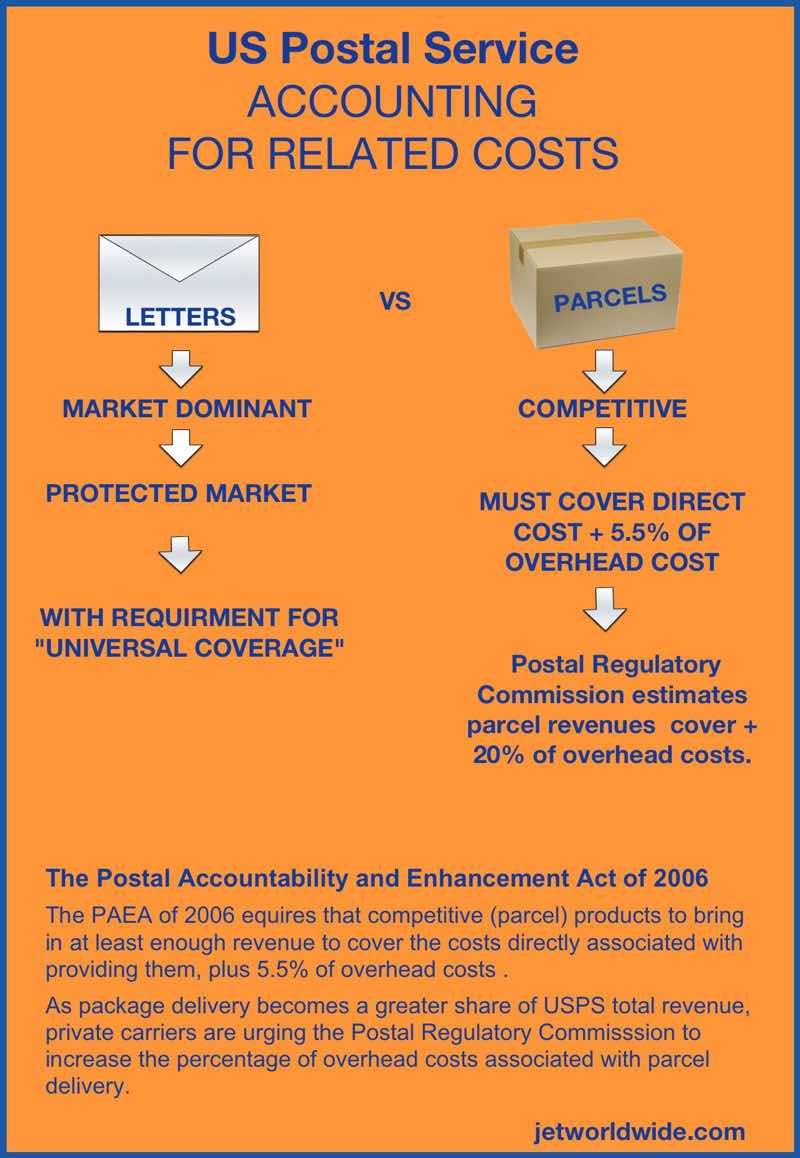
USPS, Amazon, USA and Last Mile Delivery
The usually mundane world of parcel delivery was thrown into the headlines with claims by President Trump that the US Postal Service (USPS) is being taken for ride by serving as Amazon’s “delivery boy.” Adding to the headlines, a Presidential Taskforce has been set up to study the US Postal Service and recommend reforms.
As Amazon and USPS are powerhouses in the world of e-commerce and impact our daily lives, it is worthwhile to look beyond the headlines.

Disclaimer: The information in Jet Worldwide online content, including this post, is for general information only and is not intended to, constitute legal and/or tax advice. All liability with respect to actions taken or not taken based on the contents of this site are hereby expressly disclaimed. The content on this posting is provided “as is”; no representations are made that the content is error-free.
From a 2016 Report to Congress:
- Since 2007, the USPS cumulative losses total more than $55 billion. The liquidity of the postal service has been provided by the U.S. Treasury.
- The rise in parcel revenue has not been able to offset the dramatic loss of the more highly profitable mail revenue.
- Total USPS mail volume in 2015 dropped to the amount of mail delivered in 1988!
- The USPS is mandated to serve 150 million households on a typical day - which facilitates trillions of dollars in commerce
- The USPS has over $125 billion ins unfunded liabilities and debt
Why does it matter?
The role of Amazon and USPS in American e-commerce simply cannot be overstated. For all the talk of last mile delivery solutions to the USA, the basic fact remains that the USPS remains as the most economical choice for last mile delivery to the USA.
- Amazon is by far the leading online merchant in the USA
- USPS is by far the leading solution for last mile delivery to the USA
IF YOU CANNOT BEAT THEM, JOIN EM!
USPS is the preferred last mile delivery in the USA -even for UPS, FedEx and DHL
Along with Amazon, USPS largest customers include:
- FedEx (SmartPost)
- UPS (Surepost)
- DHL (Global Mail)

FedEx, UPS and DHL - and other independent "postal consolidators" utilize the USPS Parcel Select Service.
Parcel Select is a work share program offered by the USPS that gives progressively larger discounts based on point of injection and sorting criteria.
Jet Worldwide provides international e-commerce merchants direct access to the USA via high volume parcel express clearance processes.
Does Amazon get “too good a deal” from the USPS?
Why is the United States Post Office, which is losing many billions of dollars a year, while charging Amazon and others so little to deliver their packages, making Amazon richer and the Post Office dumber and poorer? Should be charges MUCH MORE!
Donald Trump Tweet, December 29, 2017
Argument 1: Amazon is a valuable USPS customer
One side plausibly makes the point that the massive Amazon volumes gives the USPS a way to reuse some of their fixed costs left bare by the decline in mail. As the argument goes, the growing USPS parcel delivery business has given the USPS a way to service legacy fixed costs and limit the losses it would otherwise impose on taxpayers.
Alternative Argument: USPS is losing Money on Amazon Deliveries
The position of FedEx and UPS is that the impressive growth in the USPS parcel delivery business is adding costs that are being incorrectly associated with the costs of letter delivery.
This mixing of costs -as the argument goes - is driving up the calculated cost of letter delivery (which is regulated by the Postal Regulatory Commission) . Such misapplication of costs causes unfair price competition and "below cost" parcel pricing for major customers (most notably, Amazon).
US Postal services businesses are divided into two categories:

USPS Market-dominant Services (primarily letters)
Primarily first-class mail. The privilege of having a monopoly on this service is countered by the legislative mandate for universal coverage (delivery to every address, six days a week and for a fixed price).
USPS Competitive Services (primarily parcels)
Parcel delivery and Priority Mail are the products that compete with private carriers (namely FedEx and UPS). The USPS has the power to negotiate individual price agreements for high volume customers such as Amazon.
UPS and FedEx make arguments that the USPS use their monopoly position in mail to subsidize their parcel network.

Does the USPS lose $1.50 per parcel?
In the heated political rhetoric, it has been claimed that the USPS is losing $1.50 per parcel.
The consensus seems to indicate that the USPS is covering their direct costs for parcel delivery but that a greater percentage of the fixed cost should be associated with parcels.
The Post Accountability and Enhancement Act / PAEA of 2006 mandates that a minimum of 5.5% of fixed costs be assessed to the competitive/ parcel businesses. The Postal Regulatory Commission (PRC) estimates that parcel deliveries now account for 23% of USPS fixed costs.
The $1.50 shortfall in parcel revenue claimed by critics assumes parcel revenue accounts for only 5.5% of fixed cost. The PRC estimates are much higher and the corresponding shortfall (assuming the PRC is correct) is estimated be between 10 and 15 cents per parcel.
Fixating on Fixed Costs
The issue is not really about the precise allocation of USPS fixed costs as package delivery revenue has significantly helped - rather than being the cause - of the Postal Service’s persistent financial woes.
The USPS high fixed costs are the legacy of a bygone era when highly profitable first class mail supported generous retiree pensions and employee health care. Even though mail still generates over 70% of USPS revenues, their mail business is dominated by less profitable advertising (junk) mail.
The USPS parcel business has been helping keep the postal service solvent but so too has the drawing on a line of credit from the U.S. Treasury (and defaulting on over $30 billion of "mandatory" pre-payments to its heath insurance fund from 2012 to 2016).
All the interested parties - from unions, shippers, rural communities, e-commerce merchants to bulk mailers - will ultimately depend oncongressional action to ensure the solvency of the USPS.
. . . . . . . . . . . . . . . . . . .
USPS Global Direct Entry to USA for e-commerce sellers
Jet's Global Direct Entry Clearance Processes to the USA

Low cost “foreign treaty mail.”
Beyond Amazon, there is also an issue with the USPS under charging for “foreign treaty mail.” This is particularly true from countries deemed “developing” under the United Postal Union (UPU) rules.
The USPS is actively selling their Direct Global Entry Service to foreign e-commerce shippers that bypass the UPU structure.
Shippers around the world can now contract directly with USPS and take advantage of duty free Section 321 entries and Express Consignment Clearance (ECCF) import processes.
Jet can assist retailers to develop direct entry import processes via direct USPS labeling, direct airfreight to the USA and Express Consignment Clearance.
Conclusion
The discussion has transitioned from basic merits of each argument to the public relations realm to serve industrial and political heavyweights.
Beyond Amazon, e-commerce merchants depend on low cost last mile postal delivery. The USPS serves as a counter to the duopoly of FedEx and UPS with various points of access from retail to using postal consolidators.
Innovation will likely spur new last mile solutions but we do not expect these to have meaningful impact over the next several years.
The US Postal service will likely remain the lowest cost option for last mile USA delivery for the foreseeable future.
From a cross border parcel logistics perspective, the opportunity for direct entry via the USPS has never been greater. Shippers in France, Germany, Italy, China, Japan and across Europe, Asia and South America have more direct access to the USA than ever before.
USPS Global Direct Entry: Contact our team for duty free high volume express parcel volume import process for USPS Global Direct Entry.






